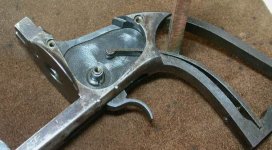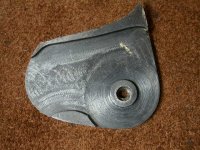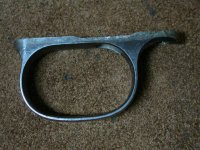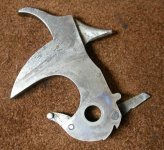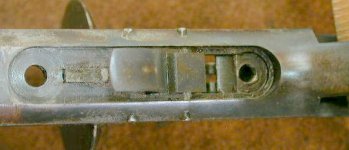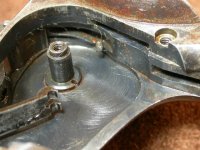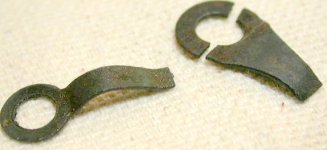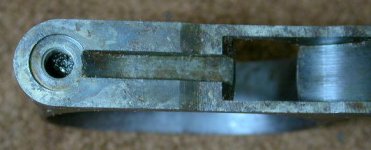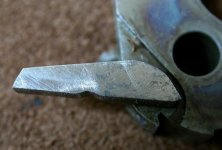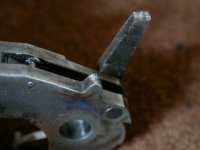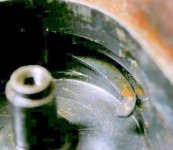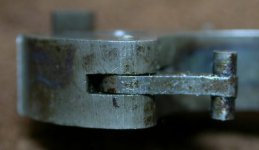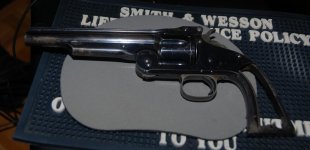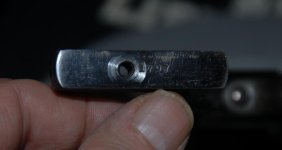Check Hammer Type and Cylinder Lock Type per confidential source. Pages are from my library but are the research of Roy Double and Col Chas Pate 1971 research. Also, as I have been informed, barrel size not being recorded by the factory is not unusual. Front sight on early 1st models were German Silver then changed to steel with same finish as gun. Steel front sight on early 1st model barrels other than 8" are have been noted. After a certain serial number range steel front sight became the standard for economic reasons (steel cheaper than German silver).
you should have a #7, flat bottom trigger and a #13 cylinder stop mechanism.
you should have a #7, flat bottom trigger and a #13 cylinder stop mechanism.
Attachments
Last edited:


